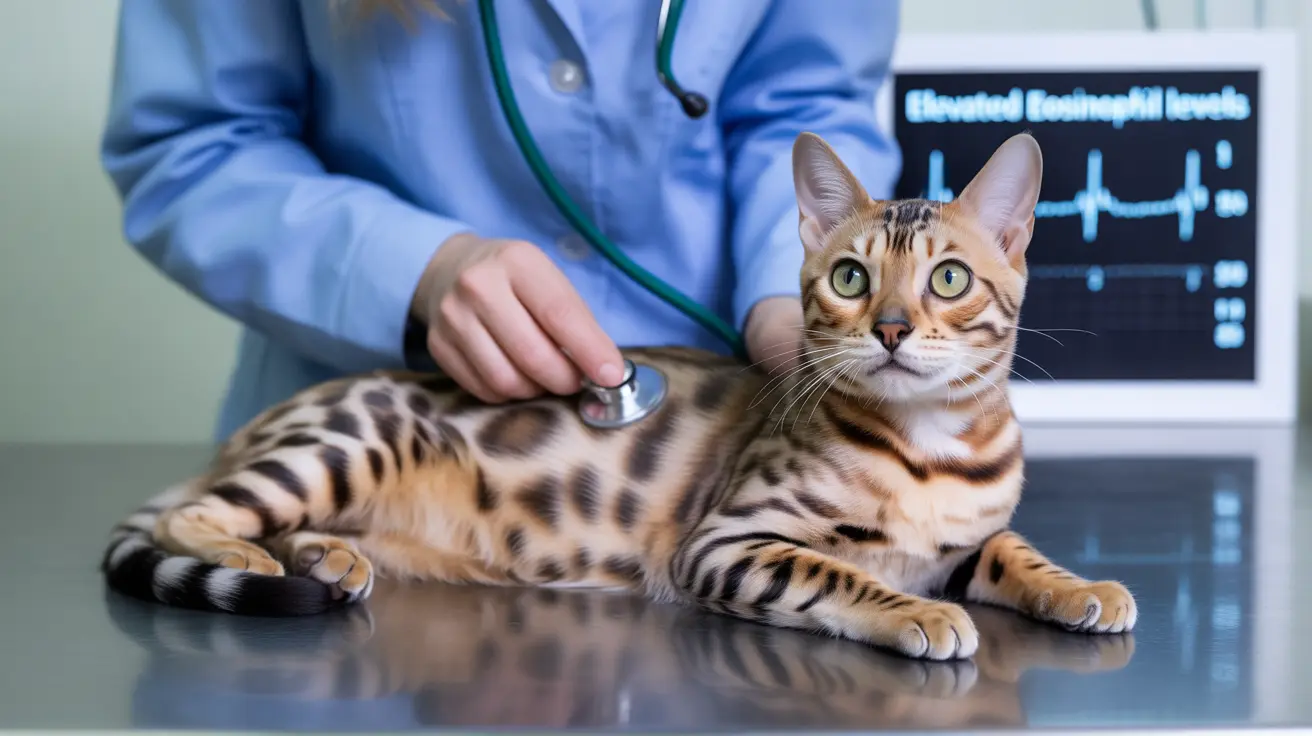When your cat's blood work reveals elevated eosinophil levels, it can be concerning for pet owners. High eosinophils in cats, also known as eosinophilia, often indicates an underlying health condition that requires attention. Understanding what causes this condition and its implications is crucial for proper treatment and management.
In this comprehensive guide, we'll explore what elevated eosinophil counts mean for your feline companion, common causes, associated symptoms, and treatment options. Whether you're a concerned pet parent or seeking to better understand your cat's recent diagnosis, this article will provide valuable insights into this important health indicator.
What Are Eosinophils and Why Do They Matter?
Eosinophils are specialized white blood cells that play a crucial role in your cat's immune system. These cells are particularly important in fighting parasitic infections and responding to allergic reactions. Normal eosinophil counts in cats typically range from 0 to 1,500 cells per microliter of blood.
When these levels become elevated, it usually signals that your cat's body is actively responding to a threat or experiencing an immune system response. Understanding the cause of high eosinophils is essential for proper treatment.
Common Causes of High Eosinophils in Cats
Parasitic Infections
One of the most common reasons for elevated eosinophils is the presence of parasites. These can include:
- Internal parasites (worms)
- External parasites (fleas, mites)
- Heartworms
- Lungworms
Allergic Reactions
Allergies frequently trigger increased eosinophil production in cats. Common allergic conditions include:
- Feline asthma
- Food allergies
- Environmental allergies
- Atopic dermatitis
Inflammatory Conditions
Various inflammatory conditions can lead to high eosinophil counts:
- Eosinophilic granuloma complex
- Inflammatory bowel disease
- Respiratory inflammation
- Skin inflammation
Symptoms Associated with High Eosinophils
Cats with elevated eosinophil counts may exhibit various symptoms depending on the underlying cause:
- Itching and skin irritation
- Respiratory issues
- Gastrointestinal problems
- Weight loss
- Changes in appetite
- Lethargy
Diagnosis and Treatment Options
Veterinarians typically diagnose the cause of high eosinophils through:
- Complete blood count (CBC)
- Physical examination
- Fecal testing
- Allergy testing
- Imaging studies when necessary
Treatment approaches vary based on the underlying cause but may include:
- Antiparasitic medications
- Antihistamines
- Corticosteroids
- Dietary changes
- Environmental modifications
Frequently Asked Questions
What are the common causes of high eosinophil counts in cats?
The most common causes include parasitic infections, allergic reactions, inflammatory conditions, and occasionally certain types of cancer. Parasites and allergies are the leading causes in most cases.
How does eosinophilia affect the digestive system in cats?
Eosinophilia can cause inflammation in the digestive tract, leading to symptoms such as vomiting, diarrhea, weight loss, and decreased appetite. This condition, known as eosinophilic enteritis, may require dietary changes and medical treatment.
Can high eosinophils in cats be a sign of an underlying neurological condition like meningoencephalomyelitis?
Yes, although rare, elevated eosinophils can sometimes indicate neurological conditions like meningoencephalomyelitis, particularly when caused by parasitic infections or immune-mediated diseases.
How is eosinophilic granuloma complex treated in cats?
Treatment typically involves a combination of corticosteroids, antihistamines, and addressing any underlying allergies or triggers. Some cases may require long-term management and regular veterinary monitoring.
What are the typical symptoms of eosinophilic dermatitis in cats, and how is it diagnosed?
Common symptoms include skin lesions, intense itching, and visible plaques or ulcers. Diagnosis usually involves physical examination, skin scrapings, and possibly biopsies, along with blood tests to confirm elevated eosinophil levels.
When to Seek Veterinary Care
If your cat shows any unusual symptoms or you suspect they might have elevated eosinophils, it's important to seek veterinary care promptly. Early diagnosis and treatment can prevent complications and ensure the best possible outcome for your feline friend.






